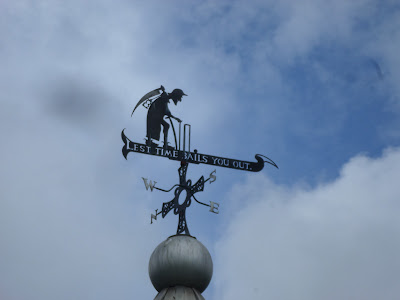Having started a Garden Group for my WI, I've had to up my game in this area. I've learned a bit but of course still have miles to go. I deliberately didn't call it 'Gardening' as I thought some would be put off by this: taking pleasure in someone else's garden or in visiting a garden centre counts in my group!
I knew some time ago that the least harmful way to fight aphids on one's roses was to wipe them off with a rag and soapy water - bathe them in a manner of speaking. Up until now I've left it with Bill who sprayed them with some sort of chemical, with only moderate success. So I did the bath thing a couple of times and it's worked a treat.
Another thing I read somewhere was to soak banana peels in water and pour this on the roses' roots. Apparently this feeds them potassium, which they crave. I've no idea if this is fact or fiction but I've done it this spring and now have loads of buds.
My roses seem to come out much later than most, but they do hang about for quite a while. I see loads of potential there and just the first few pink blooms.
Also, I kept reading that gooseberries came in June but we saw none on our two youngish gooseberry bushes, in spite of having had a small crop last year. Then one day I lifted a branch - prickly things they are - and saw a neat row of pale green berries underneath! But they were tiny, no bigger than peas. So I did some internet research and found the advice to pick alternate berries and leave the remainder to grow and ripen into July and August. So that's what I've done.
In a very old book, Every Man His Own Gardener, by John Abercrombie (published in 1782), I found the advice to prune gooseberry bushes in the shape of an umbrella. I can see how this would make everything a lot tidier, which is very useful when dealing with something as prickly as this.
I found this book at Berrington Hall a few years ago when we were down sound for Simon's wedding. I have been working at indexing my digital photos of late. This is a wonderful way to re-discover what you've done with your life, also to find new topics never before blogged about.















